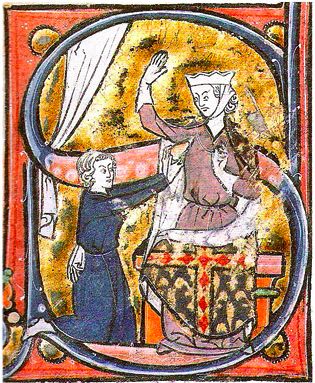Why Do Drawn Hearts Look Nothing Like Real Hearts?
 The heart symbol is one of the single most enduring and widely recognised symbols in modern culture. But where did it come from?
The heart symbol is one of the single most enduring and widely recognised symbols in modern culture. But where did it come from?
Something like the familiar heart symbol goes back many thousands of years. Specifically, several pieces of pottery going back as far as 3000BC clearly show the unmistakable symbol. However, in these instances, the symbol is noted to be a simplification of either a fig or ivy leaf, not a crude representation of the human heart, and seemingly, at least initially, not having anything to do with love. Fast-forwarding through history and we find many cultures using a similar symbol, such as depicted in Grecian, Cretian, Minoan, Mycean, Roman and Corinthian pottery, along with many others. In these instances, again, the symbol doesn’t appear to be representative of a heart, but of various leaves.
For example, the early vine leaf imagery in Greek culture was mostly used to represent Dionysus, the god of wine, fertility, and ecstasy, among other things. For a more straightforward example of the ivy leaf imagery having a double, suggestive meaning, in the city of Ephesus around fourth century A.D, the symbol was used to represent a brothel.
As ivy is quite long-lived and hardy, it was also prominently seen on early Greek and Roman graves. Interestingly, entirely independent of the Greeks and Romans, Buddhists also came to use a symbol similar to that of the drawn heart. However, in their culture, it was representative of a fig leaf, which came to symbolise enlightenment.
However, just because these very similar early symbols strongly resemble the modern symbol for the heart, doesn’t necessarily mean this is where the modern symbol came from and we, unfortunately, lack much in the way of direct evidence to trace its early lineage. As such, it has also been proposed that it derived from a different, now extinct, plant known as, “silphium“, which was used in ancient times as a very effective form of birth control, among many other uses. The trade of silphium was so lucrative that Cyrene, the town it was grown in, actually put it on their money. Along with its obvious links with a form of love, the plant’s seed pod was stylised in ancient times as what we can now recognise as akin to the heart symbol.
Whether these various leaves or seed pod had anything to do with the subsequent symbol directly, it is generally thought describing the human heart as looking like certain leaves may have had something to do with it. You see, though Arabic and other doctors of earlier periods had made leaps and bounds in anatomical study, during the middle ages, much of this was lost or suppressed by the Church. And with autopsies being outlawed, many were forced to rely on the early descriptions of these doctors and nothing else. These descriptions tended to describe the heart in one of two ways, looking something like a conifer cone in overall shape or looking something like an inverted leaf, with the stem as the arterial branching.
As for direct evidence, appearing in a 13th century French manuscript and written by an unknown author, a simple romance tale called “Roman de la poire” (Romance of the pear) is now famous for featuring one of the the earliest known images of the heart in a metaphorical sense, where a man hands his heart to his lover. Its shape is likened to that of a conifer cone, in keeping with the known medical literature of the time. Around this same time in the 13th century, the royal banner of the kings of Denmark prominently depicted the heart symbol.
In the early 14th century, we also see yet another conifer-cone shaped heart where Giotto de Bondone depicts a heart being giving to Christ in a painting at the Scrovegni Chapel.
From here, numerous others began using this same basic symbol, at first with the point commonly on top, and then switched to pointing down like today around the 15th century. During this same period, the indentation in the fat side of the heart symbol started to appear more and more frequently, perhaps mimicking the look of certain types of leaves as mentioned and as many have theorised, or perhaps not.
Whatever the case, during the next few hundred years, several things happened that saw the heart symbol’s popularity explode. Ironically, though the Church had played a large role in people being unaware of what an actual human heart looked like, it also was integral in the spreading of the heart symbol. Specifically, the so called “Sacred Heart of Jesus” was supposedly seen in a vision by one, Saint Margaret Mary Alacoque in 1673.
Physically, this Sacred Heart is remarkably similar to the modern heart symbol, though generally depicted surrounded by thorns and sometimes depicted on fire. The Catholic Church used this symbol extensively in the subsequent centuries.
However, as previously noted, by that point the symbol and its use to depict a human heart had already been well known and commonly used by artists and others for a few centuries. It was even used by Protestant Reformation leader Martin Luther when he oversaw the development of his coat of arms, “Luther Rose“, in 1519, over a century and a half before Saint Margaret’s vision. Luther had this to say about the design of his coat of arms in a letter written in 1530:
…I shall answer most amiably and tell you my original thoughts and reason about why my seal is a symbol of my theology. The first should be a black cross in a heart, which retains its natural color, so that I myself would be reminded that faith in the Crucified saves us. ‘For one who believes from the heart will be justified’ (Romans 10:10). Although it is indeed a black cross, which mortifies and which should also cause pain, it leaves the heart in its natural color. It does not corrupt nature, that is, it does not kill but keeps alive. ‘The just shall live by faith’ (Romans 1:17) but by faith in the Crucified. Such a heart should stand in the middle of a white rose, to show that faith gives joy, comfort, and peace…
So contrary to what is often said, Saint Margaret Mary Alacoque’s vision was not the origin of the symbol as representing a heart, but certainly helped popularise it with its widespread use by the Catholic Church after this.
The other important thing that happened to help popularise the symbol, and that also predated the Sacred Heart vision, is the late 15th century introduction, and later spreading, of the French card suits, Cœurs (Hearts), Carreaux (Diamonds), Trefles (Clubs) and Piques (Spades).
In the end, though religious pressure on the medical world waned in later centuries and anatomical knowledge was eventually spread far and wide, the sheer amount of artistic, poetic and commercial attention given to the iconic heart symbol not only saw it survive, but thrive as symbol for both the human heart and love. Despite that love doesn’t originate in, nor does the symbol look much like, the human heart, from the looks of things, the drawn heart representing these things is not about to change anytime soon.
If you liked this article, you might also enjoy our new popular podcast, The BrainFood Show (iTunes, Spotify, Google Play Music, Feed), as well as:
- Why Doesn’t the Heart Get Tired and Need to Rest Like Other Muscles?
- The Origin of Valentine’s Day
- 10 Strange and Wonderful Valentine’s Day Traditions from Around The World
- How “XOXO” Came to Mean “Hugs and Kisses”
- How Long a Person’s Heart Has To Be Stopped Before Medics Wouldn’t Try to Revive Them
| Share the Knowledge! |
|








Have people become so far removed from food?
If you slice a heart down the center, almost half way through, so it lays flat for frying, it looks like the commonly used heart shape.
Get connected, go kill something and eat it.
Then let us all hope you are on their hunting list.
I saw a video of what the view would be if humans were “see through” and various organs were visible. It depicted a man and a woman facing each other and moved to a point where the “camera view” was looking through both of them. Their two hearts formed the heart symbol. I don’t believe the creators of the video had any plan to have that effect. The “camera view” kept on moving so this overlay view changed fairly quickly.
I can imagine many crazy scenarios as to how the ancients may have seen something similar… but they are just WAGs…
anti-christian pieces of shit. Like people back then hadn’t ever gutted a hen, slaughtered a cow, to know what a heart looks like.
Good piece. Very informative.